International SEO Case Study: tips to get more visibility in new regions or countries
When planning international SEO strategies, there are many things we can do to try to rank a website in specific countries and regions. Often, we make a lot of effort and, even so, without really knowing why, we can’t manage to achieve enough visibility in those countries and regions. This recently happened to me.
About a year ago, in May 2021, I started a digital project with the aim of selling a local product from Catalonia, Spain, around the world. I created two websites, with two different objectives. One of them, www.denadal.cat, is a geolocalized website only in Catalan, with the purpose of selling mainly in Catalonia. The other one, www.tiodenadal.online, is a website initially created in one language, English, that later on was also translated into Spanish, with the intention of selling on an international scale.
I wanted to become the main website selling Catalan Christmas products around the world. Over the course of the year, I achieved different goals, but I also had to face different challenges: sometimes, the website wasn’t visible in my target regions or countries.
Overcoming these challenges required different strategies which I’m now going to share: a series of steps that do not guarantee success for every single website, but that might help you find a new approach.
How can I know if my website is not visible or if it is not even indexed?
When we want to analyze why a website is not visible in search engines in the countries or regions where we would like to have more visibility, there are different aspects we can look at from a content, technical or linking perspective.
Before we start, it is also important to highlight that a site can be indexed in the search engine of a particular country or region, and still not get enough traffic. This happens when the search engine is able to crawl the content of a page and value it as relevant enough to appear in its index, but not enough to publish it in the main results, in the main rankings, and therefore, it hardly gets any traffic.
So, before analyzing why a website is not visible in a particular country or region, we must answer the following questions:
Can search engine robots crawl my website successfully?
The first point to check is that the search engines can correctly crawl the pages of our website, in the different languages and locations.
This can be validated through Google’s robots.txt tester or in the robots.txt file of the website.
Is my website properly indexed?
Next, we must confirm that the pages include the index tag, the tag that informs search engines that we want a page to be indexed. We can validate it through Google Search Console, which will show us the indexation of the different pages of the website:
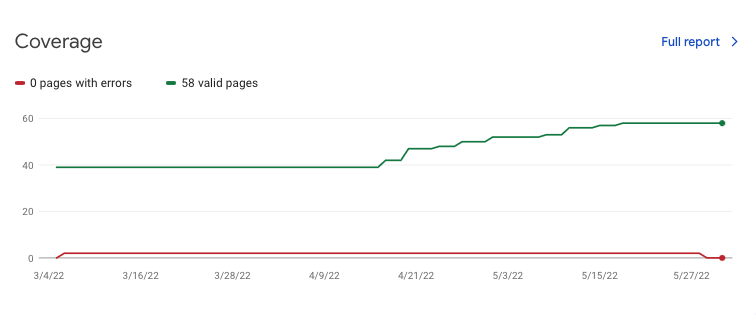
We can also check the indexing status of our pages with Oncrawl’s indexability analysis:
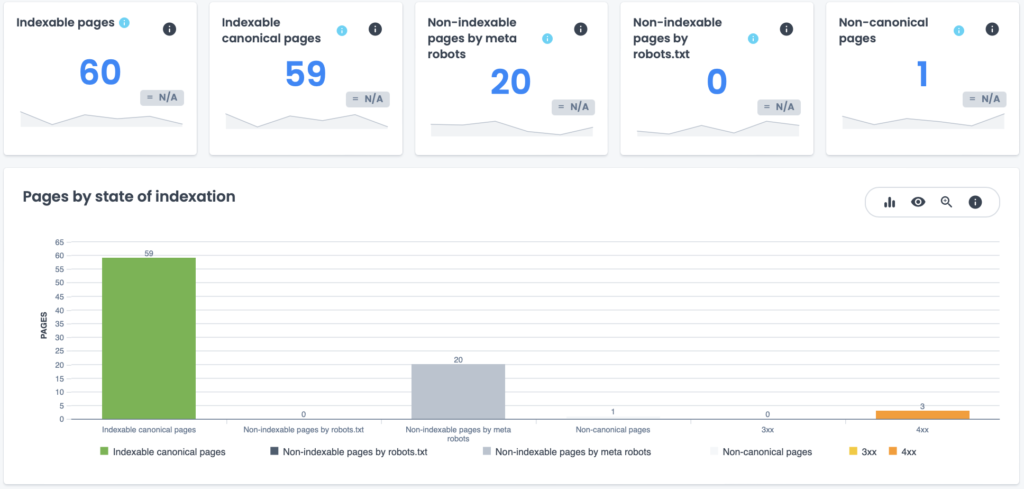
How to know if we already have traffic from a target country?
Finally, we should access Google Analytics or Google Search Console to check if we already have traffic through some channel, no matter how small, in the country or region we want. Having very low traffic in that area is not the same as not having any traffic at all.
In Google Search Console, go to Performance and filter by country.
Comparison of countries with more visibility and less visibility:
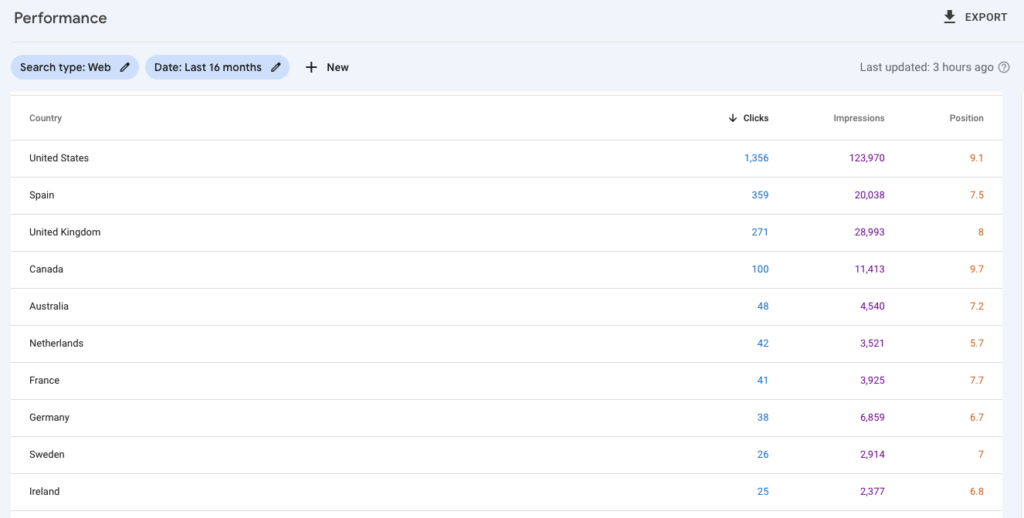
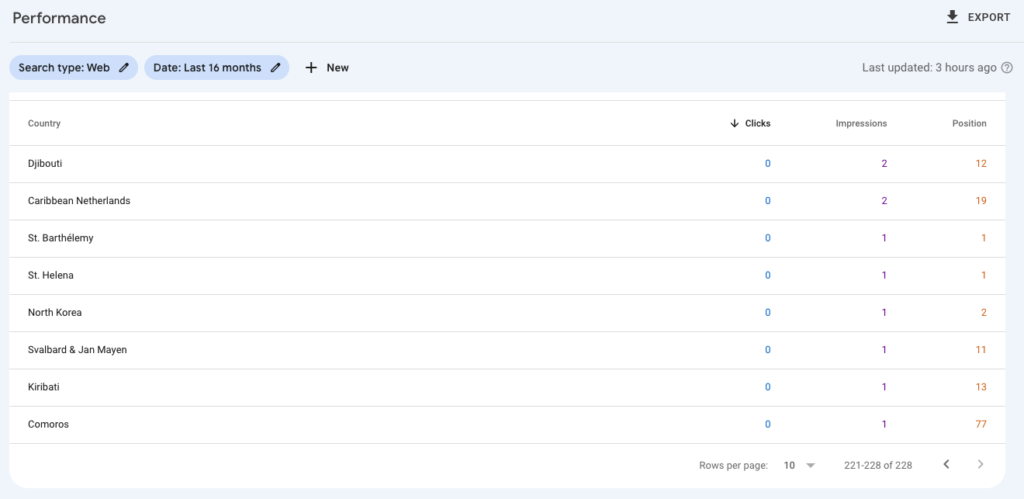
With this, we have determined that the website is indexed correctly in different regions or countries, however its visibility and rankings are widely different.
Why is my website not visible in some regions or countries?
There are different reasons that can lead to a website not being visible in a specific country or region. Although there can always be other reasons or factors, now I will detail different reasons that affected the visibility of my website in search engines in some regions, as well as what I did to turn it around.
1. Content too generic: the importance of focusing
During the first months of publication of the tiodenadal.online website, only in English, the main organic web traffic obtained was from the United States, although the goal was to get it from many countries, not only English-speaking countries, but also others such as Spain or France. However, there was not enough visibility in other countries, as we can see in the following image:
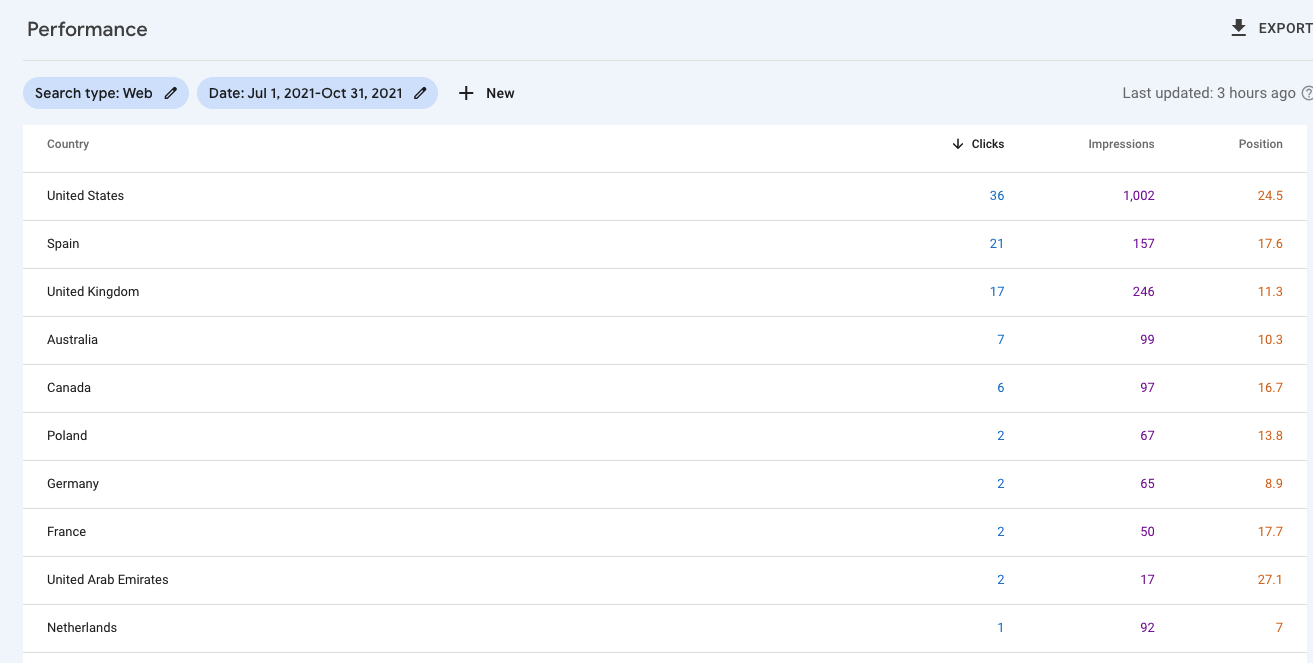
To turn it around, I included sub-folder by language (/es/), to rank also in Spanish-speaking countries. This action helped increase visibility in Spanish-speaking countries, although mostly in Spain, where the keyword study had been performed. Before that, I hadn’t specified that I wanted to reach target users from this region, so it was not reflected in the visibility in search engines.
On the contrary, the domain with a country specific domain (cctld), obtained faster and higher rankings in its target area, as well as traffic, than the more generic one:
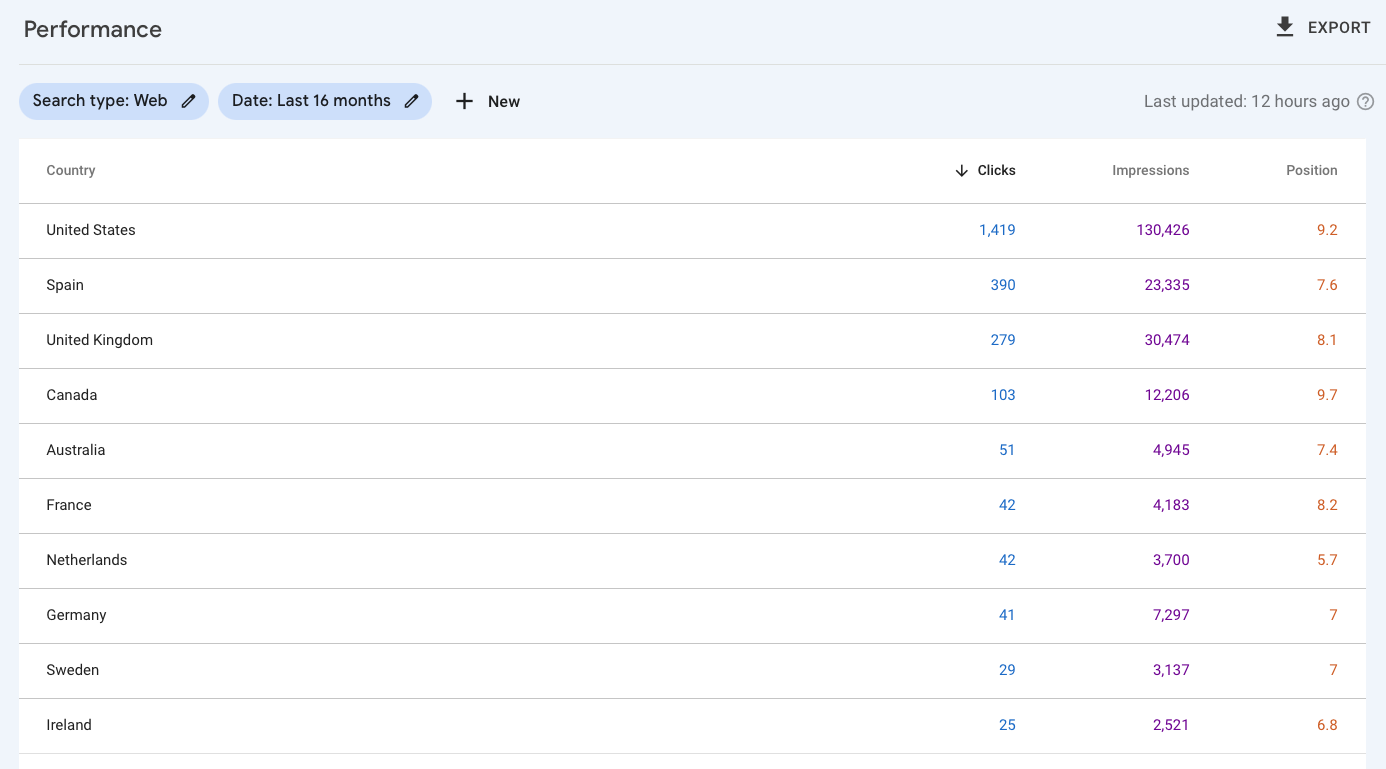
A well-designed architecture with gtld, subdivided in subdomains or subfolders in a structured way, or with cctld, strategically designed, can considerably help the probability of showing up in potential regions. Keep in mind that every industry and country is unique and what may work for some may be different for you.
2. Non-geolocated content
Another reason we have identified why a website does not appear in a particular region is because the geolocation of the content is not prioritized.
Even when countries speak the same language, such as the United States and the United Kingdom or Spain and Mexico, the habits and ways of searching for products and services can be significantly different, either in the concept, the channel, etc…
It is advisable to do multilingual keyword research according to the region or language and to focus the content, from URLs to titles, geolocalizing it, to offer the users a good experience.
To sum up, to promote visibility in a specific region it is advisable:
- To create quality content for each language
- To customize the content for each region
- To remember that each region has different customs and habits
Performing keyword research for each region or language will let us reach our target audience and it provides more personalized and customized content that will help to increase conversion rates and, probably, allow you to have less competition and find more opportunities.
3. Transcribe, do not translate
Especially when you write in minority languages or when you promote local products, like in the case study example. It is important not only to translate the content very well, but also to transcribe it properly for both search engines and users, but especially for users: when they search something, they need to understand the language of each version of the site clearly. If we do not include good translations, it will be very difficult to get users to potential pages of the website in some languages.
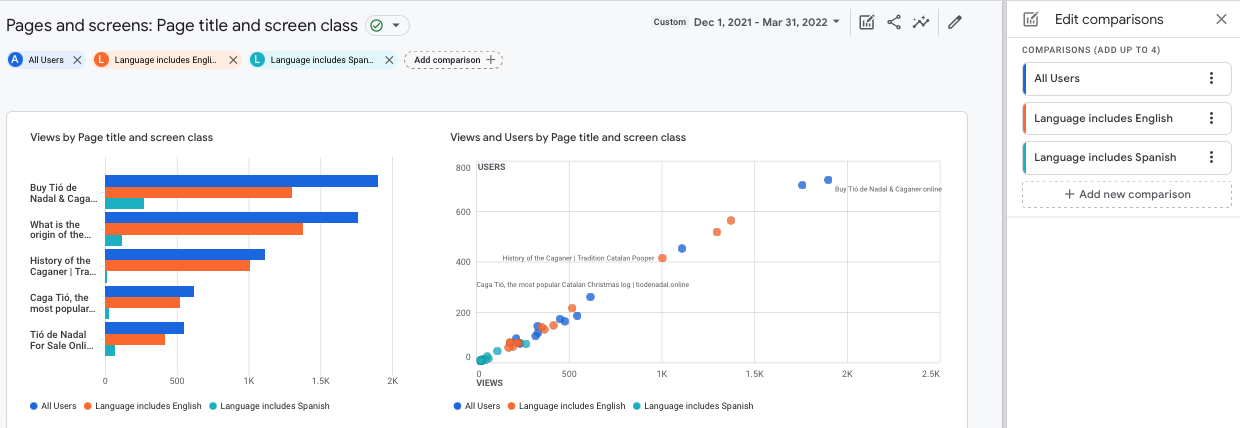
Image: example few users in some languages
As Google points out, you should avoid automatically redirecting users based on the language detected, so having a good translation in each version, transcribed or at least reviewed by a native speaker, will help provide a better user experience.
In addition, with a good translation we will avoid creating duplicate content of our pages in the different versions.
4. Hreflang configuration
So far, multilingual keyword research, geolocalized content generation and good content translations have significantly helped my case study project achieve higher visibility in the target countries.
Even so, Google search results still occasionally confuse some keywords and languages due to the project’s peculiarities.
That is why I also set hreflangs tags when the new language was included because although we had translated the content to the two versions in both languages, as we can see in the picture below, in some Spanish versions of the site in Spain, some English pages were prioritized. This happened because the content was very similar to that of the site about local products and sometimes search engines get it mixed up.
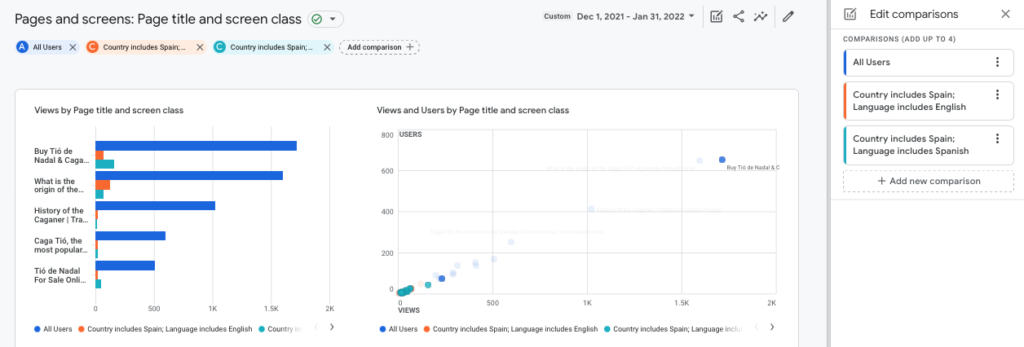
This resulted in a bad user experience on these pages as they could not find the website in their language (in this case, Spanish):
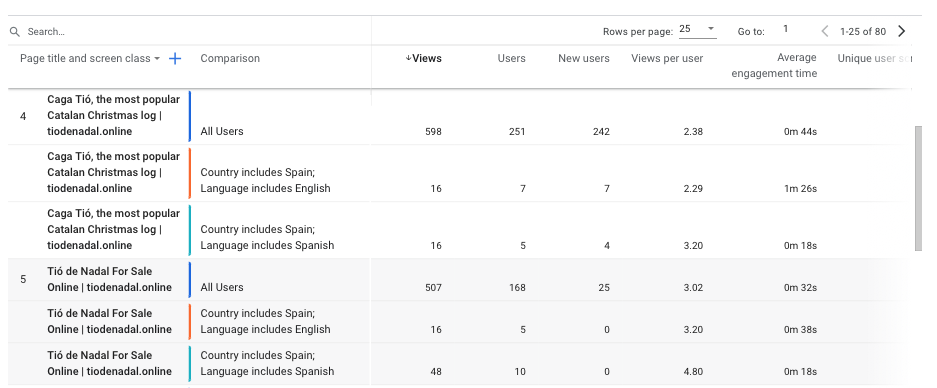
So, we set up hreflang tags to encourage Google to select the right page in each country or region.

Properly configuring this tag ultimately helped me improve visibility in the target countries. Here is more information about how hreflang works.
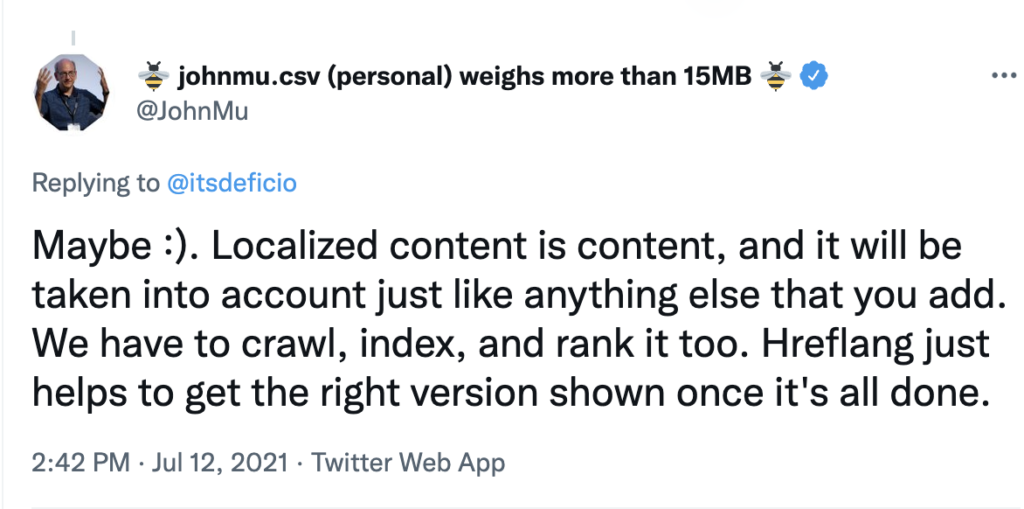
5. Geolocate in Google Search Console
If we still have problems regarding the geolocation of the content, meaning the page does not appear in a target region or country, we can geolocate it in relevant countries in Google Search Console, if it is a gTLD.
6. Sitemap errors
Even if we have done all this, there may still be technical errors that hinder the visibility of the website in a particular region or country. That’s why performing frequent technical audits is key to detect new issues. In my case, I found that one of them was a sitemap error, with potential pages that had not been included.
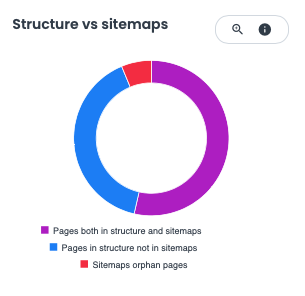
structure vs sitemap
Pages that are not included in the sitemap can make it difficult for search engines to index them in any region or country. As well as orphan pages, the ones without links and with no relationship with the other content of the web.
7. Internal linking: in all your versions
In relation to the web structure, we must consider that good internal linking by topics, with the appropriate language within our website, is also essential to promote the visibility of our pages in each specific version.

Within our website in each language we must prioritize, both for the user and for the rankings, the pages that are most important for each specific subject and language and link them in a natural way:
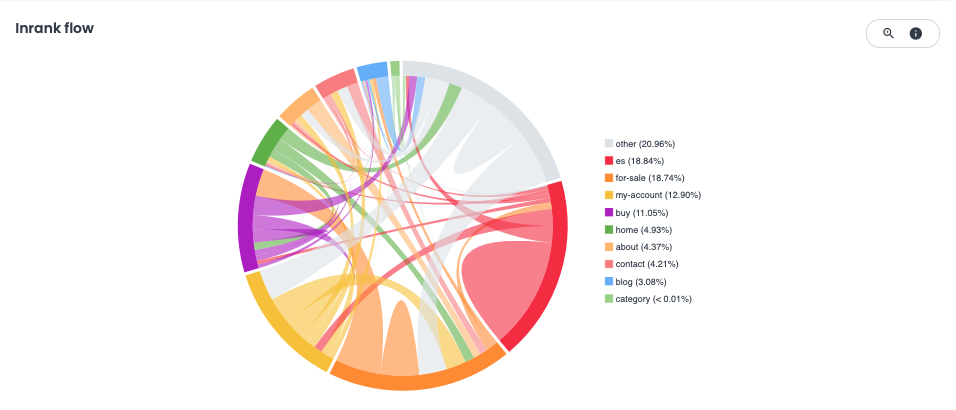
At the same time, we must allow users to navigate easily and intangibly through the different language versions.
8. Local servers VS CDN
Finally, another option to consider if we do not obtain visibility in a region is whether a local server, in only one country, is enough to rank in other countries or if we should use a CDN.
In our case, with a server in Spain we have managed to rank first for some queries in the United States, even in Australia. So in this case, considering a CDN network is not a priority. Although it can be beneficial for many larger and heavier websites, in more competitive sectors. With small websites where there are not so many pictures, videos, or files, it has not been valued as a priority, but it can be a competitive advantage in other sectors.
[Case Study] SEO storytelling to sell your SEO projects
9. Links. Otherwise, why would users think you are worth it?
If we want to rank in some regions, we should be relevant for the people from that region, right? We need authority in each location. That’s why, to gain visibility in each country, I had to design strategies to attract links from the potential markets where I wanted to appear, so that both users and search engines would realize that I was of interest to them.
What are the local directories for your product? What about the media in the country? What are they talking about in relation to your topic? Would they be interested in having information about your products or services? We must ask ourselves all these questions (and more) in order to influence the media, magazines, blogs, websites… from the region and get them to talk about our products and services, always keeping in mind that each country and culture is different.
Through market research and a geolocalized keyword research we can find out and analyze the needs related to our product and who is talking about it in each area in order to develop unique, specialized and quality content and strategies.
10. E-A-T: become the main expert on your topic
When you try to sell a product on an international scale, users from other countries have to be able to trust you, to believe in your website. Through content, images, links, references, social networks, videos, etc. You have to become a website with enough experience, authority and trust for the customers to buy your products.
E-A-T can help increase your visibility in your potential countries and regions.
There are different actions that you can do to increase your site’s experience, authority and trust:
- Create a detailed ‘about me page’ with reference links
- Gain authority in social networks
- Include authors in blogs known within the subject and with a biography about them
- Complement it with images, videos and detailed product information
- Promote actions to get reviews from your target countries, either in Google My Business or within the products of the web
- Include contact details and a direct contact channel for users (e.g.: whatsapp or chat)
- And, as mentioned before, links and mentions in local magazines or directories
11. Market research: who are the main players in each area?
Finally, I would strongly recommend doing deep market research before developing your international strategy in each area. Analyze your competitors, the main players in each country, which may change depending on the place. Also, sometimes we must assess whether these competitors can also be an opportunity.
For example, in our case study, the main competitive marketplaces (or opportunities to sell) are Amazon, in Spain, and Etsy, in the US.
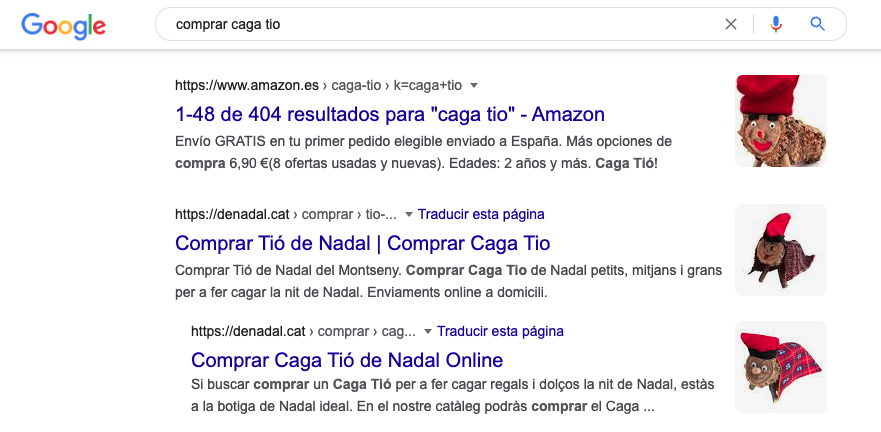
Spain – Amazon (We rank second after Amazon).
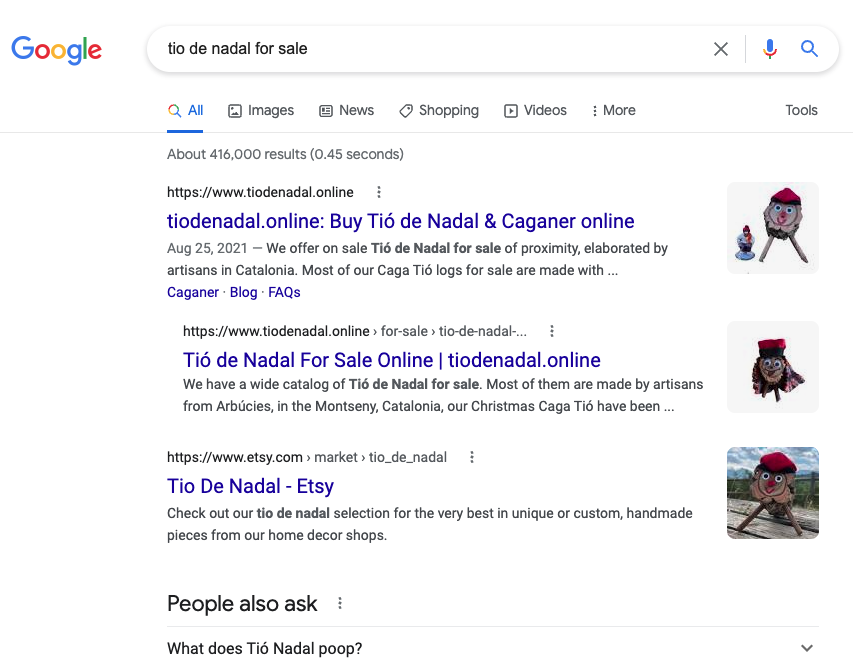
US – Etsy (We rank first, before Etsy, but the top ranked products on Etsy are also ours!).
Be aware of users’ buying habits, culture and interests, focus your resources and prioritize, technically analyze your website on a regular basis and, this way, perhaps your website will be more likely to appear in those potential countries or regions!

